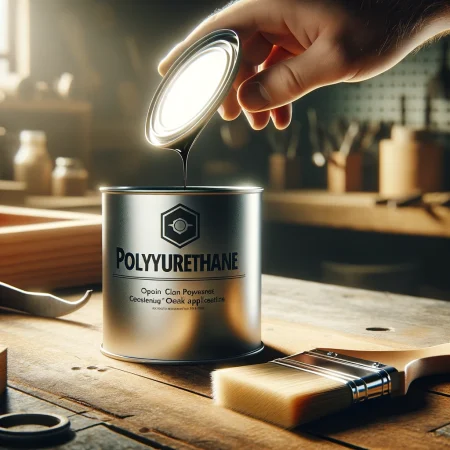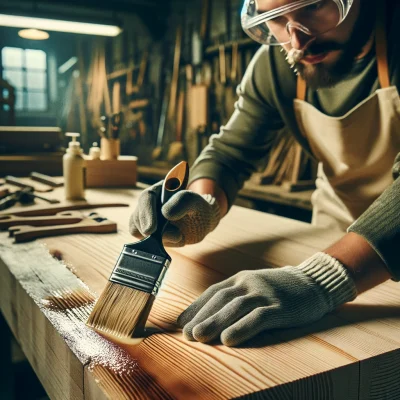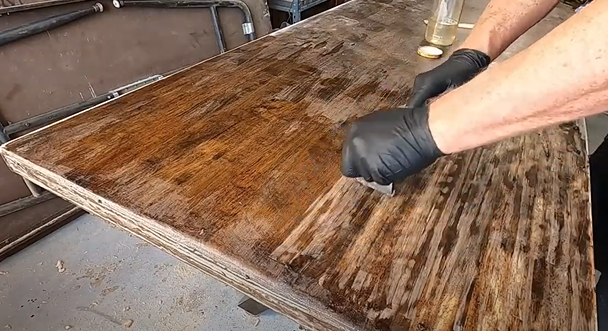Fixing sticky polyurethane can be a tricky task, but with the right approach, it is entirely manageable.
Whether you’re dealing with a sticky finish on your wooden furniture, floors, or any other surface, understanding the causes and solutions is key to restoring the beauty and functionality of your items.
This article will guide you through the process of identifying why your polyurethane finish might have become sticky and how to fix it effectively.
Key Takeaways:
- Understanding the causes of sticky polyurethane is crucial for effective treatment.
- Proper preparation and application techniques can prevent stickiness.
- There are several methods to fix sticky polyurethane, depending on the severity and the underlying cause.
Causes of Sticky Polyurethane
Before diving into the solutions, it’s essential to understand why polyurethane finishes become sticky in the first place. Several factors can contribute to this problem:
Improper Curing
Polyurethane needs adequate time to cure fully. If the environment is too humid or cold, or if the coat applied was too thick, the curing process can be slowed down, resulting in a sticky finish.
Contamination
Dust, grease, or other contaminants on the surface before application can prevent polyurethane from adhering correctly, leading to a tacky finish.
Old or Improperly Mixed Product
Using polyurethane that has passed its shelf life or was not mixed well can also lead to a finish that never fully hardens.
Preparing the Surface
The first step in fixing a sticky polyurethane finish is to prepare the surface properly. This might involve cleaning the surface thoroughly to remove any contaminants and lightly sanding it to create a smooth base for reapplication.
Methods to Fix Sticky Polyurethane
Light Sanding and Recoating
If the stickiness is due to improper curing or application, lightly sanding the surface with fine-grit sandpaper and then applying a thin coat of polyurethane can help. Ensure the environment is optimal for curing, with low humidity and a temperature around 70°F.
Using a Solvent
In cases where the polyurethane is not curing due to contamination or an old product, applying a solvent like mineral spirits can help remove the sticky layer. After the solvent has been applied and the surface has dried, you can then reapply a fresh coat of polyurethane.
Stripping and Refinishing
For severe cases, completely stripping the polyurethane finish and starting over might be necessary. This involves using a chemical stripper to remove the old finish, cleaning the surface thoroughly, and then applying a new coat of polyurethane.
Choosing the Right Fix for Sticky Polyurethane
| Situation | Recommended Fix |
|---|---|
| Light Stickiness | Light Sanding and Recoating |
| Contamination | Using a Solvent |
| Severe Issues | Stripping and Refinishing |
Tips for Preventing Sticky Polyurethane
- Always ensure the surface is clean and free of contaminants before application.
- Apply thin coats rather than a thick one to allow for proper curing.
- Ensure the working environment has adequate ventilation and is within the recommended temperature and humidity levels.

To provide more insights, let’s look at some resources and tutorials that can help you understand the process better:
Further Reading
For those looking to dive deeper into the topic, here are some additional resources:
- How To Fix A Bad Polyurethane Job?
- How To Fix Uneven Polyurethane Finish On Floor?
- How Long Should Latex Paint Dry Before Applying Polyurethane?
- Tips for Cleaning Polyurethane Off Brushes and Tools
- How to Safely Work with Polyurethane in a Woodworking Setting?
- The Science Behind Polyurethane: How Does it Work?
- Safety Precautions When Working with Polyurethane
- What is Polyurethane and its Uses in Woodworking?
- How to Get Polyurethane Off Wood
- 10 Effective ways on How to get polyurethane off hands?
Advanced Techniques for Fixing Sticky Polyurethane
Sometimes, the basic methods might not suffice, especially if the sticky polyurethane is a symptom of deeper issues. Here are some advanced techniques:
Heat Treatment
Applying gentle heat can sometimes help cure sticky polyurethane. A hairdryer set to low heat, waved over the surface from a safe distance, can expedite the curing process without causing damage. However, this method requires caution to avoid overheating and damaging the wood or the finish.
Chemical Hardeners
For polyurethane that remains tacky due to formulation issues or environmental factors, a chemical hardener designed for polyurethane might be the solution. These products can help solidify the finish, but it’s essential to follow the manufacturer’s instructions closely.

Frequently Asked Questions
Can I apply a new coat of polyurethane over a sticky surface?
It’s not recommended to apply a new coat over a sticky surface without addressing the underlying issue. Doing so can lead to further adhesion problems and a finish that may never properly cure.
How long should I wait before fixing sticky polyurethane?
Ideally, you should allow the finish to cure for at least 48 hours before attempting any fixes. If the surface remains tacky beyond this period, it’s unlikely to cure on its own, and intervention will be necessary.
Is it possible to fix sticky polyurethane without stripping it?
Yes, in many cases, especially if the stickiness is due to minor issues like humidity or application errors, methods like light sanding and recoating or using a solvent can resolve the problem without the need to strip the finish.
Additional Resources
For those looking to expand their knowledge or tackle specific challenges, here are some valuable resources:
YouTube Tutorials
- Techniques for applying heat to cure sticky polyurethane
- Using chemical hardeners on polyurethane finishes
By leveraging these advanced techniques and resources, you can tackle even the most stubborn sticky polyurethane issues. Remember, the key to a successful fix lies in understanding the cause of the problem and choosing the appropriate solution. Whether you’re dealing with a recent application or trying to refresh an older finish, patience and precision are your best tools for achieving a smooth, durable polyurethane finish.

